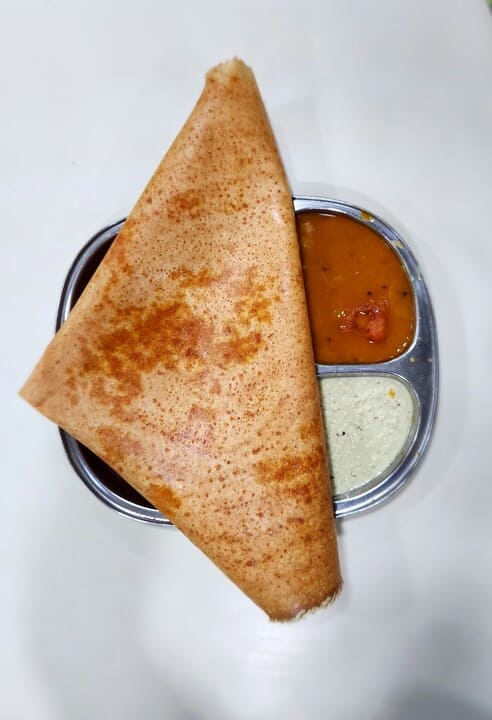The eternal question haunts us. Can diabetes and tradition coexist? Moong dal dosas beckon, promising comfort and nourishment. But are they friends or foes? As an Ayurvedic doctor, I’ve explored this puzzle. Join me on a journey, through science and flavor. Let’s unravel the secrets of pesarattu, the humble green gram crepe. Discover its place in the diabetes-friendly kitchen.
Nutritional Profile of Moong Dal Dosas
To understand the impact moong dal dosas may have on blood sugar, we first need to look at their nutritional content.
- One moong dal dosa (approx. 60g) contains around 100-130 calories
- Each dosa has about 15-20g of carbohydrates
- Moong dal is a good source of protein and fiber
- The glycemic index of moong dal is estimated to be in the low to medium range
So at first glance, moong dal dosas seem to have a reasonably diabetes-friendly nutritional profile – they aren’t too high in calories or carbs, and contain fiber and protein which can help moderate blood sugar response. But let’s see what scientific studies have found.
The Research on Moong Dal and Blood Sugar
Several studies published in international medical journals have investigated the effects of moong dal on diabetes parameters.
A 2018 study in the Journal of Food Science and Technology found that a diet containing moong dal improved fasting blood glucose and hemoglobin A1c (a marker of long-term blood sugar control) in diabetic rats.
A 2016 study published in the journal Molecules showed that an extract from moong bean seeds had an alpha-glucosidase inhibitory effect, meaning it could potentially slow the absorption of carbohydrates and reduce post-meal blood sugar spikes.
Another 2016 study in the Journal of Food Processing and Preservation demonstrated that incorporating germinated moong dal into biscuits lowered their glycemic index compared to biscuits made with non-germinated moong dal.
While these studies are promising, it’s important to note that they were small and some were conducted in animal models. We need more robust human trials to draw firm conclusions.
Real-World Experiences
As compelling as studies can be, I always find real patient stories to be illuminating too. Here are a few anecdotes from my practice.
Ramakanth, 48, found that switching from regular dosas to moong dal dosas a few times a week led to more stable blood sugars and a small drop in his A1c over 3 months.
Priyanka, 55, likes to have mini moong dal dosas as a snack. She pairs them with curd or chutney and finds they keep her energy levels up without causing huge glucose swings.
Amit, 62, didn’t notice a big difference in his numbers with moong dal dosas compared to regular dosas. But he vastly prefers the taste, so he chooses them anyway!
Of course, these are just examples and may not apply to everyone. It’s crucial to personalize your diet based on your glucose patterns and goals.
Making Moong Dal Dosas at Home
If you want to try incorporating pesarattu into your diet, they’re quite easy to make at home.
1. Soak 1 cup of whole green gram lentils for at least 4 hours
2. Drain and grind into a smooth batter along with green chili, ginger, and cumin seeds
3. Add water to reach dosa batter consistency
4. Heat a non-stick pan, pour the batter in a circular motion, and cook until crisp
5. Enjoy hot with chutney and sambar!
You can experiment with the ratio of lentils to water, as well as additional spices and veggies, to create your perfect dosa.
The Bottom Line
I believe moong dal dosas can be a healthy addition to a diabetes eating plan for many people. Their balance of protein, fiber, and complex carbs is a step up from refined flour dosas. And if you genuinely enjoy them, that’s important too! After all, the best ‘diabetic diet’ is one you can stick with long-term.
However, portion sizes still matter, and dosas are best eaten as part of a balanced meal with plenty of non-starchy vegetables. Check your blood sugars after eating to see how they impact you personally. And of course, regular exercise, stress management, and medication are equally key for optimal diabetes control.
At the end of the day, small mindful tweaks to traditional recipes, based on scientific evidence and personal insight, can add up to meaningful benefits over time. So go ahead and savor some delicious moong dal dosas.
IMAGE BY : zoshua-colah-GcuY6DB-ysE-Unsplash

